I carefully placed the oak in the hole, and we moved back the forest earth with our fingers. It felt like a homecoming, like a renewed vow, like having the whole forest as a witness, and at the same time, being witnesses for it. Life, vouching for life. Reciprocity.
In the last days, with the air finally above the freezing point, and the grey silhouettes of the barren twigs dripping with fine silvery moisture against the faint morning light, I have been drawn into the forest. Every morning, I unlocked the chain securing my bike to a low metal arc between the parking cars, brushed away the water from the saddle and the handlebars, and rode two blocks into the Grunewald forest, often in an early spring drizzle.
The Grunewald is a huge woodland in the southwest of the German capital. It stretches 4 miles from east to west and 6 miles from where I live to the south. Deep inside of it, you don’t hear any traffic noises, only the chirp of the black tit or the tune of a song thrush, the silent thunder of a leaf slowly falling to the ground. There are protected species like the rare and huge hermit beetle. There are joggers, mountain bikers, mothers with small kids and dogs—and some fantastic swim spots with their northern European policy of bare skin and extremely wide tolerance. In the early mornings and evenings, especially now in spring, you almost surely bump into a couple of wild boar. That’s the typical Berlin mixture of these times: considerable wildlife, but more weird people doing weird things.

The Grunewald is about tenfold the size of New York’s Central Park, and nearly equally accessible. The woods are open as a porous skin from many access points of the city. Behind one bend, the trees. When I go there, I first have to get past the roar of the six-lane Heerstraße main traffic artery, and next take the bridge over five curved railroad tracks bluntly sparkling in the mist. Then I cross into the trees. First underbrush, littered with trash, then pine, birch, black cherry, oak. Leaves carpet the floor, punctuated by heath, moss, and withering stumps.
In these last mornings, I have been longing for touch, for the earthly touch of transformation. I was longing for the mutuality which now seemed so overdue after three months of unusually severe winter cold, isolating me mostly inside. When I entered the forest on my usual narrow trail it felt like moving through a wall. Although it was still cold, the forest atmosphere immersed me in the scent of wet leafy soil, of cold bark covered with algae, of moulds and plant parts half transformed into phosphorous, nitrogen, and air.
I rode slowly, the wheels leaving deep tracks in the thawing floor, and breathed in the air. There it was already, I thought, the earthly touch for which I had longed. I did not even need to bend down. I inhaled the air, and exhaling gave back something of myself. My breath flowed as steam through the branches. Oxygen and carbon and water vapour condensed into tiny droplets of silvery transparency. Breath is touch as well: a mutuality, bound together on the thin surface of each of my lung’s alveoli, where the world enters into my body like an acorn dips into the surface of a puddle. I pedaled slowly beneath the stems and branches on which the cold gleaming drops hung, occasionally bursting into a sudden rain shower on my coat when I brushed along them.

I thought that the surface with which we respire is not that much different to a water droplet. The innermost layer of the lung consists of delicate bubbles of the most subtle tissue layer which in the end are watery bubbles themselves. They are membranes through which the thin spheres of vapour, transpired by the plants, crystallized as hoarfrost, condensed as dew, enter my own body, merging with its translucent blisters like an iridescent soap bubble merging with another, reflecting the world on its shimmering surface until it bursts.
I was on the way to “my” oak. When something important is under way, I always check in with that particular tree to see what to make of it. Being there helps me access the fact that I also am only enabled to thrive by means of the light from above, and that whatever is weighing me down will ultimately be taken back by the earth, without a trace of labour. Trees breath. They are manifestations of the sky inhaling the earth and the earth being washed over by the sky. When the soil inhales sun and air, trees grow. If you looked at a forest through a time-shift lens, you could see its different patches rhythmically swell and decay, like an ocean, the respiration of its waves changing the shores. Trees are breath, on a very large scale.
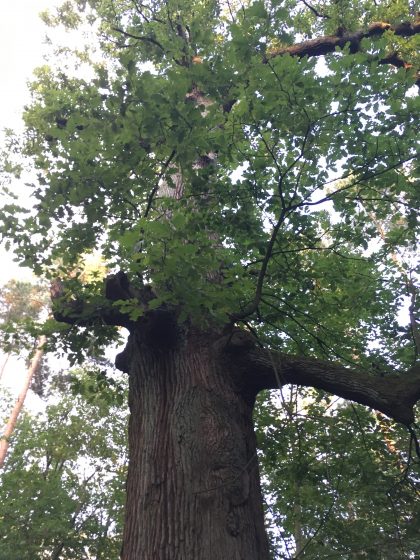
Last summer, I invited the lady, who is now my wife, to my oak. It was high summer, the air balmy, the undergrowth rustling with life. Some of the 500 species, mostly insects, who are obliged to live on oaks as their only habitat, were buzzing around our heads, while we leaned against the bark with its deep clefts, holding hands, not being able to embrace the whole stem, not by far. Oaks are the trees with the highest number of life-giving relationships in the northern hemisphere. Even if we did not speak it out explicitly, our embrace around the oak’s stem was a promise. It was the pledge to remain tuned into the other’s breath. To remain breathable, edible, vulnerable. To remain earth, fertile, fragrant.
Being edible is the basic condition which we share with all other life. It is the door through which our communion comes, the pleasure to eat, and the consolation of being transformed into the bodies and the blossoms of other beings. Understanding that we need to accept being edible leads to understanding that only as vulnerable beings we are able to be real, and to connect with others. Doing this is a profoundly embodied, sensual process.
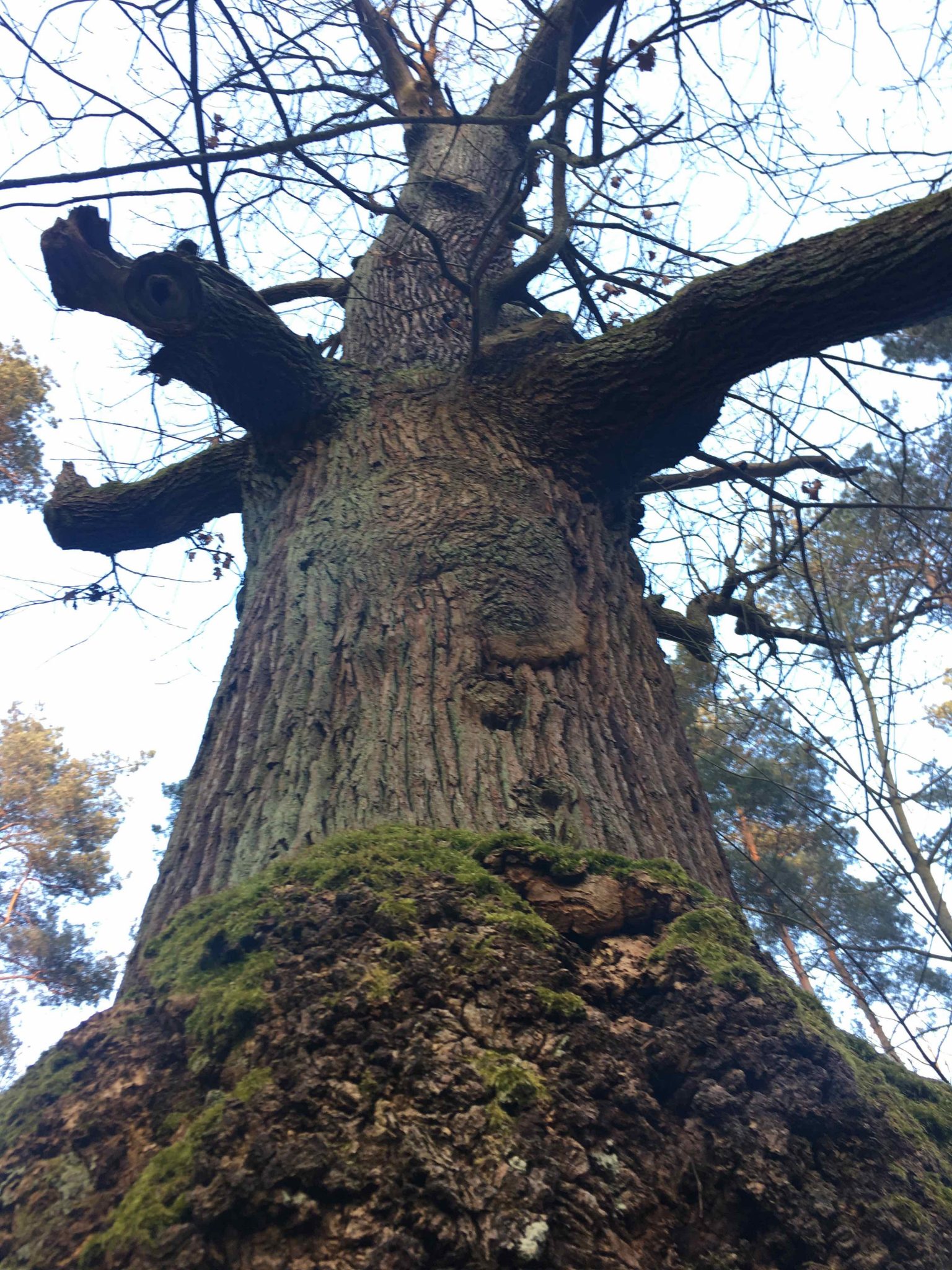
I estimate that my oak is about 400 years old. It was already a thriving tree before Descartes decreed that all nonhuman bodies are just machines, and only the human godlike rationality real after all. Another Berlin oak, named “Dicke Marie”, “fat Mary” by Alexander Humboldt and his brother Wilhelm (because the two played at its feet in the Tegel forest near to their manor, and because the kitchen chef of their home was a somewhat strict and pretty obese lady), is estimated to be 800 years old, bringing us straight back into the middle ages.
Breath means to give something back when you receive something. It means giving back something of yourself when you inhale something which belongs to other. I have often been thinking that if we would organise more of our human ways as breath, many problems would settle all by themselves. Imagine teaching schoolchildren conceived as breath. Becoming with-other as mutual breathing in and out. Agriculture as breath. Breath is linked to eating. It is the other half of the respiration cycle in which food becomes body and body air. Breath is a fundamental reaching out to the other, and a substantial welcoming of the other as a necessary condition to be a self. Trees, the stem pushing upwards, the branches reaching for the void air, are a form of how breath becomes body.
Trees grope for the other. They reveal space as a relationship. They reveal relationship as breath. Breath, in which I constantly give away something from myself and constantly receive something from another being, incorporating it into my own existence. We have heard so much of the world’s forests being “green lungs” and therefore needing protection. This plea, however, has not been that successful. Maybe it would help to feel that forests are not only lungs in a technical sense. They are breath. Their way of being, and of relating to us, is an ever so slow rhythmical tide of breathing out myself, breathing in the other, of total, completely entangled reciprocity.
Breath means community, means sharing, means letting yourself be imagined by others: by humans, by non-human others, by non-animate others, as stone, and sand, and air. In the summer, after we had met under the oak tree and joined in its vow of reciprocity, we spent entire nights in its neighbourhood, stretched on the forest floor on a blanket. The wiry forest grass tickled our skin while we looked up to see the foliage flow into the approaching darkness of the night. The thrush’s song gave way to the grunt of wild boar and scattered sounds of stomping feet, while the beasts of the night were closing in on us, creatures among other creatures.
We were there, speechless, amidst a profound encounter of curious and needful bodies, caressed by the night, brought to life by the night. The primordial myth of Eros, as Ovid has written it down, is such a beginning in mutual tenderness, reciprocal fertilization: the primeval wind impregnated the primordial night, giving birth to a silver egg, says Ovid. Out comes Eros. He is a god because he is the tender curiosity for other, the force that yearns for touch and hence begets connection, and thus creates newness. The primordial night being inseminated by the primeval wind, that is also the archetype of breath. Breath is the precursor of what is there in solid form, its precursor in the form of desire.
When I entered the woods in these very early spring mornings of 2018, it was all about touch and reciprocity, all about sensing my skin adjacent to others, of being permeated, embraced, entangled. This touch was pretty faint, a fine mist, a delicate inhalation. My encounter was already touch before I even felt it as such, just by being breathable, by being the space from which I renewed myself. I experienced the world yearning for spring as profoundly mutual. Its fertility relied on the confidence that mutuality would remain possible, would remain the soil from which we all grow.
That’s not always the most obvious thought in a metropolis like Berlin, full of humans, trying to function the best they can, trying to make their lives ever so special, coping with expectations and constraints, all this in the short, busy time they are given.
Berlin is by far not a megacity, but still a place where mutuality often falls short. There is, for instance, a more than 50-percent-chance that your marriage will fall apart, far higher than in most rural settings of my home country. Breathing is not always easy in Berlin. From this angle, it makes things a little simpler that there are far more trees than humans populating the German capital. Berlin streets are lined with over 400,000 oaks, lindens, birches, cherries, sycamores, and other towering fellow beings. Fellow beings like us, who have a youth, born from the tiny shell of an acorn, groping for light, groping for contact, yearning to be, blossoming and bearing fruit, which, as my wife from time to time reminds me, means to understand that becoming mature means to become edible.
As the Berlin trees are on German soil, they are all precisely taken account of. If you look closely, you can discover a little green tag with a number on it nailed to the bark of every stem. In Berlin, if you feel lonely as a human (many do, as surveys reveal), you can at least go out of your house and directly hug a tree. (Beware of dog droppings, though). You can hug it and think of the invisible bubbles it transpires from its leaf surface and the concealed bubbles deep inside your body merging into one another in one tidal wave of breath.
Last November, my wife gave me an oak for my birthday. It was quite a decisive birthday, my fiftieth, so receiving an oak felt somewhat consoling. The oak was a pretty juvenile tree, a slender stem, not much higher than 50 inches, with a couple of short barren branches, to which two or three brown leaves clung, in a pot filled with earth. The oak was in deep hibernation, waiting for spring. It had arrived in a huge box packed with straw. When the temperatures climbed above freezing point in these last days, I suddenly thought of the baby oak and its fate.
My wife had carried the tiny oak for my birthday all the way from the post office. Having it stand there on my special day was a pretty surprise. She had carried the baby oak in its straw cardboard casing all the way into our flat on the third floor while I was traveling. The tree was small, but given the pot, packaging and all, it was an exhausting job for her to drag the tree up to our flat. I did not even know that you could do this: having trees shipped to a condominium in the heart of the German capital.
There it sat, beside the table with the more practical-seeming gifts, in the heated air of our apartment in late autumn, waiting for the earth to take care of it again. She gave me an oak to renew her vow—as we had done for the first time, under that other oak. Now, I thought, looking at that fragile young tree sitting in a tiny pot with some earth, surrounded by the wrapping paper that had hidden it, it is up to me to give something back to the oak. To give it life actually.
As it was too hot in the room, we put the baby oak out on the balcony, still half in its wrapping. There it sat in a corner, between all the summer stuff half-heartedly left there, folded chairs, boxes, empty flower pots. The soil over its roots became dry. We nearly forgot about the plant, until storm Xavier hit the capital in early December. I remember finding a shared car to rescue my wife from her workplace, as all public transport was shut down. The streets were awash with objects drifting around: tree branches, boards from hamburger stands, fragments of billboards, bicycles, plastic debris, driving leaves, in fact, whole trees across lanes and no one around to put them away.
We hurried to check on the devastation that had befallen our balcony. The straw mats that had been fixed to the railing hung in the branches of the surrounding oaks and sycamores. The oak sapling lay upside down under a deck-chair, the earth strewn around. I did not feel very well seeing that. I felt as though I had violated an important obligation. But what to do with it? We did not have a garden. We were impatiently waiting to be allotted a piece of land in an urban gardening area close to the forest but were very low on a long waiting list, and still are.
When the winter cold kicked in, I felt this uneasiness even more considerably. At least when I allowed myself to feel it. When I thought of the baby oak, a slightly startled feeling came up. Was the tree baby ok? Would the earth in its pot freeze through, killing it? Would the frost eat its tiny buds, already protruding from the empty twigs? This went on for some weeks. I visited the balcony, literally held my breath, then closed the door and tried to stop thinking of the tree.
I started moving when I saw the devastation the storm had done to the Grunewald. The forest administration estimates that 40,000 trees were lost here in December 2017, in only an hour’s time, when the worst of the storm hit. Since then, it has been difficult to access the forest by my usual tracks. Fallen trees blocked every path, one after the other. But it was not the devastation that finally made me think of the little oak again. It was the way the forest administration dealt with it. They sent in private contractors to clear cut every affected tree—including the ones badly beaten, but still standing.
One cold and grey morning, on a walk with my dog, I visited my old oak friend (which had weathered the storm unaffected) and cycled back, the poodle in her grey parka against the cold racing from one side of the track to the other. I stopped at another old oak which had been battered but had remained about two thirds intact. I had seen it in the days before since I had been coming back after the storm. If you look at old paintings of oaks you realize that there is nothing that stops them thriving. Here however, I stopped in my track, as the battered oak had been felled and cut to pieces. Cleared away, it was a painful sight.

What these guys were doing here was not simply tidying up the wrong way. It was literally breathtaking. They used the storm as an occasion to step out of the relatedness that thrives on mutuality. The five hundred or so species that rely on oaks as food or dwelling space (like the hermit beetle) do so because the oak is alive even if half crushed, half rotten, already half transformed into other beings.
The oak’s substance is visibly made of other beings. It is itself—in a majestic and towering way—precisely by being other. By this it is, more visibly than other species, breath, open to be breathed in, ready to take up my exhalation, and even more so the breath of the hermit beetle, of the black tit, of the woodpecker, the ants and hornets dwelling in its holes and crevices. Cutting and carrying away a half-dead oak seemed like disallowing relatedness to happen. It was the deliberate act of creating a life in isolation, lonesome and locked in. It is the standard forest policy, not only in the capital but in 99.8 percent of German woodland.
We wrapped our baby oak in long stretches of packing paper and carried it to the 136 bus, and then to the X49 bus. Nobody looked at us and our heavy load. Wildlife and weird people, and we apparently belonged to both. I even carried a spade, rusty from leaning against a damp basement wall. It was a grey, quite chilly day, the forest floor just above freezing solid. When we left the bus and walked the few steps to the forest entrance, we fell silent. A ceremonial feeling came upon me. And then it was also so weird.
What we were doing seemed very much like carrying owls to Athens, or rather, oaks. Planting an oak in an oak forest. Throwing water into the ocean. Besides, this was surely illegal. In a city where there is an individual identification number for each tree, it is hard to imagine that it would be acceptable for citizens to set their own plant specimens to roam free in the woods. At least, we told ourselves, the oak was not an alien species. We were offering the forest what the forest was continuously offering to itself.
Dusk began to fall already. We had selected the place carefully beforehand, a clearing, close to the tree that had been cut. The air was chilly. Our breath formed white clouds of tiny droplets, mine mixing with that of my wife, and then perfusing into the shrubs and among the stems. When I pushed in the spade, the earth under the loose grass gave away easily. It was a thing of few minutes. I dug a hole, and we moved out the remaining sediment with our fingers, touching the cool, soft, velvety sediment, touching our hands with one another, caressing the earth, being caressed back by its sheer touch, caressing one another. Then I carefully placed the oak in the hole, arranged the compact form of roots and earth that had come out of the pot so it sat straight, and we moved back the forest earth with our fingers.
It felt like something we both had long needed to do. It felt like a homecoming, like a renewed vow, like having the whole forest as a witness, and at the same time, being witnesses for it. Life, vouching for life. Reciprocity, celebrated by sheer and simple touch. Just being there, connected. Becoming earth again. What we were doing there was a very simple thing, a kind of natural play, and it was also, by being that simple, a kind of deep understanding. It made us see, in a way, that a vow to stay in reciprocity is respiration. It is a pledge to be earthly: vulnerable, accessible, fertile, nourishing. Also love, after all, is breath.

Planting that slender, lonesome oak in the soil where so many of his brethren already vouched for aliveness (by sharing the own self with others) did not seem different from that moment before falling asleep together when your breath somehow becomes the breath of your beloved, of your partner, your child. Planting the oak in the cold and grey eve of the Berlin forest felt like exchanging a long and tender kiss: the encounter of two sensitive surfaces in a way that forever changes both.
Andreas Weber
Berlin


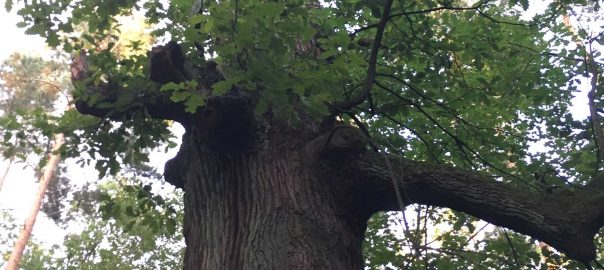
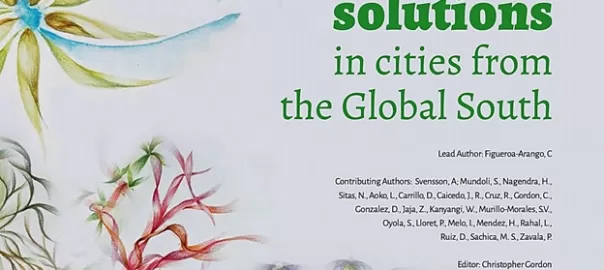
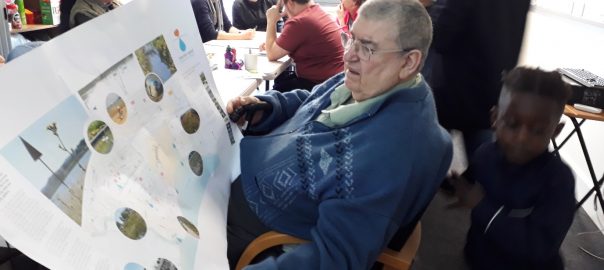


Leave a Reply